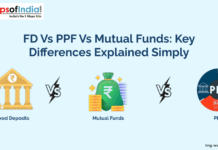A monopoly is an economic market structure where one company or one seller dominates with many buyers. There is a unique product in this market, and a seller enjoys the power of deciding the price of goods as he does not have competitors for that particular product. Here, ‘Mono’ and ‘Poly’ mean a single and to control, respectively. There are barriers to entry, and only sellers can change the price of the commodity. According to AJ Braff, “Under pure monopoly, there is a single seller in the market. The monopolist demand is market demand. The monopolist is a price-maker. Pure monopoly suggests no substitute situation.”
It’s important to note the difference between monopolistic power and monopolistic competition. Monopolistic power refers to a company with a monopoly such as powers. Still, it is not the only one to offer, whereas there are numerous firms in the market in monopolistic competition. Yet, they compete on factors other than price—examples: Hairdressing, Taxi’s, Restaurants.
Monopoly markets are heavily maintained to avoid unethical practices that take undue benefit of the consumer. On the other side, they are devoid of competition which provides companies with monopolies total control over a specific market and can lead to corruption with unreasonable skyrocketed prices and more flawed quality products.
Types of Monopolies
1) Natural Monopoly: This monopoly is known as ‘Natural’ because the direct government is absent in it, which derives that its creation initiates from variables that are not artificial. For example, the essential postal service or some utility companies, railways. It would increase the cost to set up another track, comparing it to what a competitor would make back in profit. Utilities, as stated above, because to construct new sewers or power lines which would be dearer, inefficient and infeasible. If two companies were to set up and provide distinguished lines, the costs would be higher than what they would be under a monopoly. Hence, other firms don’t enter the market because there is no profit. These prevail in the market as they can offer a product or service at a lower cost than a competitive market would provide.
2) State Monopolies: This includes industries where the state has complete ownership. Its purpose is to avoid unfair prices that private monopolies would take part in as they have much power to dictate prices. They may raise the cost to the consumer above the market rate. Let us take a few examples, such as the circulation of money and television. The state generally monitors these as they are known as ‘natural’ monopolies. A monopoly structure could only feasibly provide these services. Some governments maintain and regularise these monopolies instead. However, there is a strong political will to have these monitored and regulated by the state in some countries. For example, In the UK, the re-nationalization of the railways has become more prominent than ever to lower ticket prices.
3) Un-natural monopolies: These are an amalgamation of natural and state monopolies. They are natural monopolies in the older way but are put into effect by the state. Example: Patents. A private firm develops its new product. It may be entirely different from whatever is on the market. For instance, a new medical drug can oppose the effects of Alzheimer’s, and there is no alternate option for customers. Hence, this medicine has a monopoly within the market.
It is a natural existence as it is a crucial product. Although, this product is given an artificial monopoly through the patent system. For a while, this will be the only product customers can purchase.




